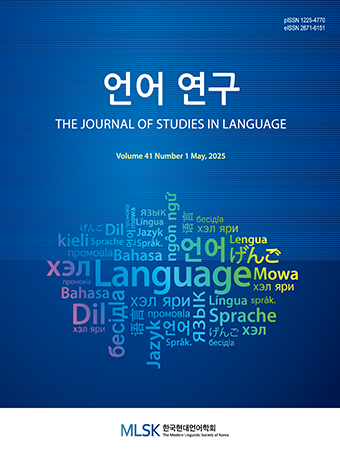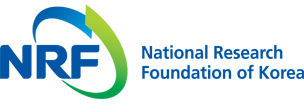-
Research Article
-
Exclamation and Polarity Focus in Korean Rhetorical Questions
한국어 수사의문문에서 감탄의 조건과 극성 초점
-
Kang, Arum
강아름
- This study examines a subtype of Korean rhetorical questions that function as exclamatives rather than as polarity-reversing assertions. These exclamative rhetorical questions …
- This study examines a subtype of Korean rhetorical questions that function as exclamatives rather than as polarity-reversing assertions. These exclamative rhetorical questions (ERQs) express surprise at an unexpectedly high degree or positive evaluation, without relying on prior common ground. Adopting Rett’s (2011) degree-based theory and focus semantics, the paper argues that ERQs involve covert gradable predicates and verum focus (VF), which together highlight a shift between the speaker’s expectation and reality. The analysis shows how rhetorical questions can encode exclamative meaning through mirativity and evaluative focus. - COLLAPSE
-
Exclamation and Polarity Focus in Korean Rhetorical Questions
-
Research Article
-
The Effects of Peer Assessment Training on University Students in English Presentation Classes
동료 평가 훈련이 대학생의 영어 발표 수업에 미치는 영향
-
Lee, Eun-Jeong
이은정
- This study examines the impact of peer assessment training on university students’ presentation skills. The research involved 27 students enrolled in an …
- This study examines the impact of peer assessment training on university students’ presentation skills. The research involved 27 students enrolled in an English presentation course at a university. A pre-test and post-test design was implemented, comparing peer and instructor evaluations before and after an eight-week peer assessment training program. Paired-samples t tests revealed that pre-training peer scores were significantly higher than instructor scores (p = .005), whereas post-training results showed no significant difference (p = .367), indicating improved evaluation reliability. Additionally, a survey-based ana demonstrated increased confidence, fairness, and engagement in peer assessment. The findings suggest that structured peer assessment training enhances students’ evaluation accuracy and learning experiences, emphasizing the need for systematic training to improve peer assessment reliability in academic settings. - COLLAPSE
-
The Effects of Peer Assessment Training on University Students in English Presentation Classes
-
Research Article
- Exploring the Role of AI-Assisted Revision with Instructional Scaffolding: A Comparative Study among Korean University Students
- Chong, Hyein
- Exploring the Role of AI-Assisted Revision with Instructional Scaffolding: A Comparative Study among Korean University Students. This study investigated how varying levels …
- Exploring the Role of AI-Assisted Revision with Instructional Scaffolding: A Comparative Study among Korean University Students. This study investigated how varying levels of teacher guidance shape the way students revise their writing when using AI support tools. A total of 139 Korean university students engaged in a multi-step writing process, which included planning, drafting, revising with ChatGPT feedback, and final submission. Participants were divided into two groups: one received structured, in-class instruction at each stage, while the other completed the tasks independently with minimal intervention. Quantitative analysis, based on metrics such as word count, sentence length, and lexical variety, revealed that only the supported group demonstrated consistent and statistically significant improvements. In addition, qualitative observations showed that students with classroom guidance engaged more critically and thoughtfully with AI-generated suggestions, often making deeper changes to structure and meaning. These findings suggest that while AI can assist with writing tasks, its benefits are best realized when embedded within a pedagogically scaffolded environment. - COLLAPSE
-
Research Article
- Cultural Context and Creative Approaches in Korean Internet Meme Localization
- Lee, Gayoung
- This study investigates cultural context and creative approaches in Korean internet meme localization among university students. Thirty-five English majors translated seven popular …
- This study investigates cultural context and creative approaches in Korean internet meme localization among university students. Thirty-five English majors translated seven popular Korean memes into English, employing translation strategies including conventional equivalence, creative translation, and descriptive methods. Results revealed that 71.4% of participants demonstrated excellent or above-average reflection of cultural context. Students successfully navigated challenges in conveying humor, emotional nuance, and cultural references across linguistic boundaries. The findings suggest that meme translation activities effectively develop intercultural communication competence by requiring students to engage with both linguistic and cultural dimensions of communication simultaneously. This research contributes to understanding how digital cultural expressions can be integrated into language education to enhance students’ translation skills and cultural sensitivity in an increasingly interconnected global communication environment. - COLLAPSE
Journal Informaiton
 The Journal of Studies in Language
The Journal of Studies in Language
Journal Informaiton
Journal Informaiton - close
 The Journal of Studies in Language
The Journal of Studies in Language









